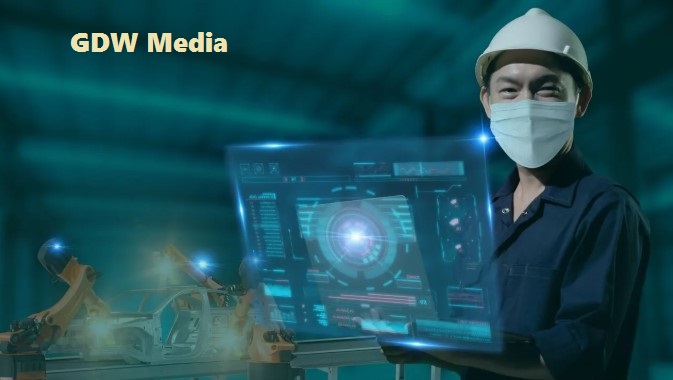
In 2025, Extended Reality (XR) and Spatial Computing are redefining how we interact with the world, driving a surge in Google searches for “XR technology 2025” and “AR shopping trends.” Encompassing virtual reality (VR), augmented reality (AR), and mixed reality (MR), XR is transforming training, retail, and healthcare, with the smart glasses market expected to grow by 48% annually by 2030. Devices like Apple’s Vision Pro and Microsoft’s HoloLens are making immersive experiences mainstream, fueling searches for “VR training applications.” This blog explores XR’s applications, innovations, and why it’s a top trending technology in 2025.
What Are Extended Reality and Spatial Computing?
Extended Reality (XR) combines VR (fully immersive environments), AR (digital overlays on the real world), and MR (blending physical and digital elements). Spatial computing, a subset of XR, uses sensors and AI to create interactive 3D environments, as seen in Apple’s Vision Pro. In 2025, XR devices support 230% improved surgical training outcomes and 40% faster prototyping in manufacturing. Searches for “spatial computing” are rising as industries adopt these technologies for practical applications.
Real-World Applications of XR and Spatial Computing
XR and spatial computing are reshaping industries:
- Healthcare: VR training improves surgical precision by 230%, while AR assists in real-time diagnostics.
- Retail: AR try-ons boost online conversion rates by 25%, with brands like IKEA using AR for virtual furniture placement.
- Manufacturing: MR speeds up prototyping by 40%, reducing costs and time-to-market.
- Education: VR classrooms enhance engagement, with 30% higher retention rates in immersive learning.
These applications drive searches for “AR shopping trends” and “VR training applications,” reflecting XR’s growing impact.
Challenges and Developments in 2025
XR faces challenges like high device costs (Vision Pro retails at $3,499) and motion sickness in VR, affecting 20% of users. Spatial computing requires advanced AI and 5G integration, increasing development complexity. In 2025, companies like Meta and Qualcomm are improving lightweight AR glasses, while Apple’s visionOS 2 enhances spatial computing interfaces. The XR market is expected to reach $25 billion by 2025, driving searches for “XR technology challenges.”
The smart glasses market’s 48% annual growth and XR’s practical applications are fueling searches. X posts praise devices like Vision Pro as “game-changers,” with users excited about AR shopping and VR training. Forbes notes 60% of enterprises are piloting XR solutions in 2025, driving searches for “spatial computing innovations.” The convergence of XR with 5G and AI enhances its appeal, making it a top tech trend.
Key Information on Extended Reality and Spatial Computing
The table below summarizes key details about XR and spatial computing, addressing trending search queries.
| Category | Details |
|---|---|
| Technology | Extended Reality (XR) and Spatial Computing |
| Key Applications | Surgical training, AR shopping, manufacturing prototyping, immersive education |
| Market Size | $25 billion (XR, 2025); 48% annual growth for smart glasses by 2030 |
| Top Companies | Apple, Meta, Microsoft, Qualcomm, Magic Leap |
| Search Trends | “XR technology 2025,” “AR shopping trends,” “VR training applications” |
| Challenges | High device costs, motion sickness, integration with 5G and AI |
| Adoption Rate | 60% of enterprises piloting XR solutions in 2025 |
The Future of XR and Spatial Computing
By 2030, XR is expected to generate $200 billion in revenue, with spatial computing enabling seamless digital-physical integration. Advances in lightweight AR glasses and 5G integration will make XR more accessible, driving searches for “XR technology innovations.” Applications in remote collaboration and gaming will further expand its reach.
Read More: Sustainable Technology and Greener Future in 2025
Frequently Asked Questions
1. What is Extended Reality (XR)?
XR includes virtual reality (VR), augmented reality (AR), and mixed reality (MR), creating immersive or blended digital-physical environments.
2. What is spatial computing?
Spatial computing uses sensors and AI to create interactive 3D environments, as seen in devices like Apple’s Vision Pro.
3. Why is XR trending in 2025?
XR’s applications in training, retail, and healthcare, along with a 48% annual growth in smart glasses, drive searches for “XR technology 2025.”
4. What are the main applications of XR?
XR is used for surgical training, AR shopping, manufacturing prototyping, and immersive education, improving outcomes by up to 230%.
5. What is the market size of XR?
The XR market is projected to reach $25 billion in 2025, with smart glasses growing by 48% annually by 2030.
6. What are the challenges of XR?
Challenges include high device costs, motion sickness, and integration with 5G and AI technologies.
7. Which companies are leading in XR?
Apple, Meta, Microsoft, Qualcomm, and Magic Leap are key players in XR and spatial computing.
8. How does XR impact healthcare?
VR training improves surgical precision by 230%, and AR assists in real-time diagnostics.
9. What is the role of spatial computing in retail?
Spatial computing enables AR try-ons, boosting conversion rates by 25% for brands like IKEA.
10. How can I stay updated on XR trends?
Extended Reality and Spatial Computing are blurring the lines between digital and physical worlds in 2025, driving searches for their transformative applications. With a $25 billion market and growing adoption, XR is reshaping industries. Stay informed by subscribing to our newsletter.
 GDW Media
GDW Media


